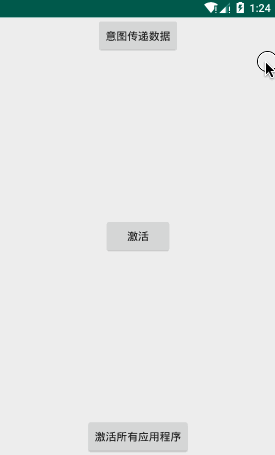在上一篇博客中介绍到,Android-Intent意图传递数据,能够传递基本数据类型系列,能够传递对象(需要序列化),等操作;
但是如果要传递 List<T>,这种类型的数据,就不能通过Intent来传递来,还有另外的方式来传递,就是自定义一个会话存储(取名:IntentSession)
IntentSession这种方式传递数据,可以通用,很灵活,能够传递任何类型的数据
IntentSession封装:
package liudeli.activity.intent; import java.util.WeakHashMap; public class IntentSession { /** * 使用懒汉式单例模式 */ private static IntentSession intentSession = null; public static IntentSession getInstance() { if (null == intentSession) { // 加入同步锁 synchronized (IntentSession.class) { // 为来解决CPU极少概率,时差性,再判断一次 if (null == intentSession) { intentSession = new IntentSession(); } } } return intentSession; } /** * 为什么要用WeakHashMap * HashMap的Key是对实际对象对强引用 * WeakHashMap的特点是弱引用:当gc线程发现某个对象只有弱引用指向它,就会被消耗并回收 */ private WeakHashMap<String, Object> weakHashMap = new WeakHashMap<>(); /** * 保存数据 * @param key * @param obj */ public void put(String key, Object obj){ if (weakHashMap.containsKey(key)) { weakHashMap.remove(key); } weakHashMap.put(key, obj); } /** * 获取数据后删除 * @param key * @return */ public Object getRemove(String key) { if (weakHashMap.containsKey(key)) { return weakHashMap.remove(key); } clear(); return null; } /** * 获取数据但不删除 * @param key * @return */ public Object get(String key){ if(weakHashMap.containsKey(key)){ return weakHashMap.get(key); } return null; } /** * 清除 */ public void clear() { weakHashMap.clear(); } /** * 结束自身 自杀 */ public void oneseifExit() { intentSession = null; System.gc(); } }
在OuterActivity 启动 OneActivity,绑定数据:
Intent intent = new Intent(this, TwoActivity.class); // 数据 List<String> list = new ArrayList<>(); list.add("黄家驹"); list.add("张雨生"); list.add("陈百强"); // 使用自定义的IntentSession 来绑定数据 IntentSession.getInstance().put("listData", list); startActivity(intent);
在OneActivity接收,接收IntentSession数据:
TextView tvInfo = findViewById(R.id.tv_info); // 得到绑定好的数据,并删除数据 List<String> listData = (List<String>) IntentSession.getInstance().getRemove("listData"); tvInfo.setText("" + listData.toString()); // 清空IntentSession IntentSession.getInstance().oneseifExit();
